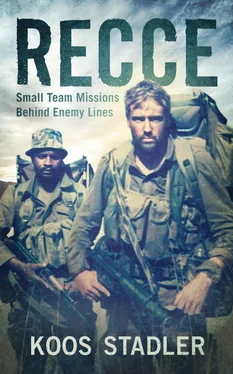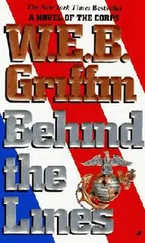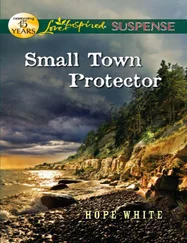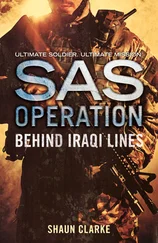Diedies and I left Neves on the high ground east of the target. He would establish comms and wait for our return. If we didn’t show up after two days, he would E&E back to the UNITA forward base, from where they would launch a search.
I navigated, as DR navigation had by now become my forte. During the planning and rehearsals, Diedies and I had agreed that I would navigate to the target, while he would lead the way once inside. The standard procedure by that time was that he would be in front without night-vision goggles, relying on his senses only, while I would bring up the rear with night vision. The reason for this was that the person with the night sights would be temporarily blinded every time he removed the instrument from the eyes. However, the goggles served the purpose of picking up the glow of fires, cigarettes and other light sources.
For the penetration, Diedies had his South African-made BXP (with silencer) at the ready, while I had my AMD-65 out. Should we bump into enemy soldiers we could eliminate them without making too much noise and move out before the alarm could be raised. On the actual target it might even give us the chance to finish the job. The AMD was meant for more serious business – if we had to engage in a firefight.
At first light we found ourselves on the edge of the cultivated lands. Hiding places were scarce, but we managed to crawl under a thicket, where Diedies covered me up with leaves and grass, then crawled in close for me to cover him. By then we had perfected a technique where we would lie close together on our backs, the one’s head by the other’s feet, weapons at the ready. This provided us with good all-round observation; as our heads were facing upwards we could detect noise and movement all around. It also gave us split-second reaction time in all directions, as one could either sit up or roll over. For drinking water, each had a tube leading from the water bag inside the kit. For nourishment we would snack on energy bars or nuts at the quietest time of day – when the sun was at its highest and sound and smell did not travel far.
The biggest challenge was waiting for the day to pass. Boredom can bring on all kinds of negative thoughts, and the fear of being compromised is an ever-present companion. That day proved to be a particularly demanding one. There was much shooting and yelling all around us, to such an extent that we thought our tracks had been discovered. By about 09:00 two youngsters made their appearance and climbed a tree overlooking our hide. The next moment they started chopping away at the higher branches and spent the whole day trimming the tree away to a stump. Most of the time one of the tree-choppers was almost directly above us.
Late that afternoon we heard considerable jet aircraft activity in the direction of our target, which made us wonder whether they had been scrambled for a mission.
It was not yet dark when we crawled out of our hiding place and started moving. Time was of the essence – we had to be on target by 01:00. We had set 02:00 as final cut-off to move out, because it would take three hours to get back to the tree line before first light. We had just started moving when we bumped into an old man returning from his fields. Diedies kept his cool and spoke to him in Portuguese, urging him to get back to his house as it was getting late. Luckily he didn’t put up an argument, hurriedly turned his back and started moving back to town.
By midnight we had reached the river just east of the runway. The aerial photography had not told us how deep and marshy it was, and it took more than two hours to cross. At some point during the crossing one of my feet got stuck in the mud and my anti-track cover got left behind. Diedies wasn’t too happy about this, but there was no time for tears. Fortunately, I still had my sheepskin bootees. We were already running late.
After crossing the river, we followed a road that led straight to the runway, and soon bumped into a checkpoint with some guards, complete with a boom gate and a dug-in tank in a defensive firing position. It took us an hour to skirt the position, moving extremely slowly as we did not know if there were any troops lying in trenches.
By 03:00 we reached the eastern end of the runway. It was already an hour past our cut-off time and we hadn’t even seen an aircraft. We decided there and then to get out before daylight. I led the way, and we were still inside the base when the first faint light of day appeared in the east. We covered the last two kilometres to the relative safety of the tree line in broad daylight, praying that we wouldn’t encounter security patrols that early in the morning.
By 06:00 we moved into dense bush and just kept going. Diedies was out of water and we had to share my half-litre. We had been going for thirty-six hours, and it was starting to take its toll. By 09:00 Diedies was severely dehydrated and I was in no position to assist him.
At last we were forced to sit down for a brief rest. As we looked back on our route, Diedies managed to say, through parched lips, “Kosie’tjie, hierdie is kak [This is a load of crap].” “Dit was laaste. Ek kruip nie weer in terr basisse rond nie. Nooit weer nie! [Never again. I’m not going to crawl around terrorist bases ever again].”
I couldn’t agree more, and I told him so. Then we each popped one of the performance-enhancing amphetamines we used to carry for such emergencies, and used the induced energy to cover distance. About four hours later, as the midday heat was at its most intense and the drugs started to wear off, Diedies suddenly stopped. Clearly at the end of his tether, he sat down and called me back.
Finding it almost impossible to speak, my colleague croaked, “I’ve given it some thought. What if we go back tomorrow night? We are now familiar with the target and with the shortest route to it. We know where to cross the river. We know where the guard post is. We can do it.”
I was flabbergasted. He was completely spent, and yet was already making plans to return to the target.
“Just think about it; they don’t know about us,” Diedies maintained. “We have all the advantage we need.”
Such was the nature of the man. Even in the most desperate of situations he could still see an outcome. In his most exhausted moments he would look at a situation with the clearest perspective and force his mind to look beyond his physical suffering.
“Okay,” I finally said, “I’ll think about it, but first let’s find the rest of the guys.”
We both had another amphetamine pill and kept moving. By the time we found the first UNITA guys that afternoon, Diedies was leaning on me for support, barely able to walk. Neves had already moved back, not knowing whether we’d been captured or not, and was happy to see us safe.
The doctor immediately put Diedies on a drip and suggested we each take a Valium to get some decent sleep. Over a hot meal we discussed the prospect of approaching the target again the following night. Neves had, in the meantime, made comms and given the Tac HQ a brief rundown of the situation. I prepared a message on Diedies’ instructions, motivating for a second penetration attempt and outlining the plan.
Before last light we again heard much aircraft activity in the direction of Menongue. It sounded like fighters taking off. I took my Valium and vaguely wondered where all the planes were going before falling into a deep and dreamless sleep.
Diedies and I were up before first light. The drip had clearly revived him, as he was in good spirits and joking: “Is jy bang, Kosie? [Are you scared, Kosie?]”
“I’m never scared,” I chirped, “just careful. After all, I don’t want to carry you out again…”
We decided to leave Neves at the temporary base, where he could maintain radio comms with the Tac HQ and, if necessary, orchestrate a search and rescue rather than sit out in the bush by himself. This time we took an HF radio with us. I discarded the improvised “bomb rucksack” and took a pack with an inner frame for the radio. The charges went in with the radio, along with extra water for both of us. We were off just after first light, and this time I wasted no time in navigating to the best position for us to penetrate.
Читать дальше












